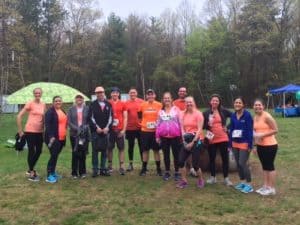In 2004, microbiologist Carl Nathan, M.D., wrote in a Nature commentary that:
“Treating infections with pathogen-specific rather than broad-spectrum antibiotics (whenever possible) will require prior, rapid, accurate and specific diagnosis. It makes no sense to use 21st-century technology to develop drugs targeted at specific infections whose diagnosis is delayed by 19th-century methods.“1
 In the decade and a half since Dr. Nathan wrote these words, the standard of care has remained mired in “19th-century methods.” Despite important diagnostic improvements made to post-blood culture methods, the days-long culturing of blood remains the foundation for pathogen-specific identification. Since clinicians cannot wait days to act when confronted with a patient suspected of sepsis, the standard of care remains empiric therapy. In the 2018 book, Superbugs: An Arms Race Against Bacteria, Lord Jim O’Neill and his coauthors describe the limitations of empiric therapy:
In the decade and a half since Dr. Nathan wrote these words, the standard of care has remained mired in “19th-century methods.” Despite important diagnostic improvements made to post-blood culture methods, the days-long culturing of blood remains the foundation for pathogen-specific identification. Since clinicians cannot wait days to act when confronted with a patient suspected of sepsis, the standard of care remains empiric therapy. In the 2018 book, Superbugs: An Arms Race Against Bacteria, Lord Jim O’Neill and his coauthors describe the limitations of empiric therapy:
“Doctors usually treat patients using empirical diagnosis, which is little more than an educated guess based on a clinical assessment of the patient’s symptoms, history, and profile. This system is often not good enough to distinguish between bacterial and viral infections, or even to tell if the patient has an infection at all. If a bacterial infection is diagnosed, there is no way to determine if the bacteria are resistant or susceptible to standard treatments using empirical diagnosis since they produce identical symptoms, and our current diagnostic tests to distinguish between them take two days.”2
Empiric therapy works for many patients, it has been demonstrated that approximately 60% of patients are on initial effective therapy, but there remain significant opportunities for improvement.3 A recent 1,400 patient, 11-site clinical trial led by investigators at UPMC found similar gaps: 2 in 3 patients were not on effective therapy at hour zero, and 1 in 5 patients were still on ineffective therapy 24 hours later.4
An Easy “ESKAPE”
Frighteningly, many patients who are not initially on effective therapy are battling a prevalent and deadly “ESKAPE” pathogens that cause the most worry for clinicians. The opportunistic ESKAPE pathogens were dubbed the acronym due to the bacterial pathogens being known for their ability to “escape” response to broad-spectrum antibiotics. The ESKAPE pathogens have been primary beneficiaries of “19th-century methods” of diagnosis. Of the six ESKAPE pathogens, four of the most common, E. faecium, S. aureus, K. pneumoniae, and P. aeruginosa, make up approximately 90% of all ESKAPE bloodstream infections.5 The Infectious Diseases Society of America (IDSA) elevated the profile of these pathogens with a report called “Bad Bugs, No Drugs” providing the ESKAPE name and highlighting the potential health crisis.6 Most of these pathogens are multidrug resistant and increasingly resistant to common empiric therapy such as the combination Vancomycin/Piperacillin-Tazobactam.
The 21st-Century Diagnostic for Fighting ESKAPE Pathogens
Enter the T2Bacteria Panel. The first and only FDA-cleared technology to detect prevalent and deadly ESKAPE pathogens in 3 to 5 hours – directly in whole blood! This breakthrough test is shown to provide results 2.5 days faster than the current standard of care.
Direct from whole blood technology is ushering in a new era of diagnostics, one befitting of 21st-century technology advantages described by Dr. Nathan in 2004.
Don’t wait another decade – it’s time to use 21st-century technology! Find out what it can do for you here.
……………………………………….
1. Nathan, C. (2004). Antibiotics at the crossroads. Nature, 431(7011), 899.
2. Hall, W, et al. (2018) Superbugs: An Arms Race Against Bacteria. Cambridge, MA.; Harvard University Press
3. Buehler, SS, et al. Clinical microbiology reviews, (2016). 29(1), 59-103.
4. T2Bacteria Pivotal Clinical Study 2018. Manuscript under review.
5. Karlowsky, J. et al. Annals of Clinical Microbiology and Antimicrobials, (2004). 3:7.
6. Infectious Diseases Society of America. (2008, December 9). No ESKAPE! New Drugs Against MRSA, Other Superbugs Still Lacking. ScienceDaily.

 In the decade and a half since Dr. Nathan wrote these words, the standard of care has remained mired in “19th-century methods.” Despite important diagnostic improvements made to post-blood culture methods, the days-long culturing of blood remains the foundation for pathogen-specific identification. Since clinicians cannot wait days to act when confronted with a patient suspected of sepsis, the standard of care remains empiric therapy. In the 2018 book,
In the decade and a half since Dr. Nathan wrote these words, the standard of care has remained mired in “19th-century methods.” Despite important diagnostic improvements made to post-blood culture methods, the days-long culturing of blood remains the foundation for pathogen-specific identification. Since clinicians cannot wait days to act when confronted with a patient suspected of sepsis, the standard of care remains empiric therapy. In the 2018 book, 
 spiked blood sample.
spiked blood sample.  Mary Millard
Mary Millard Emily Edwards
Emily Edwards